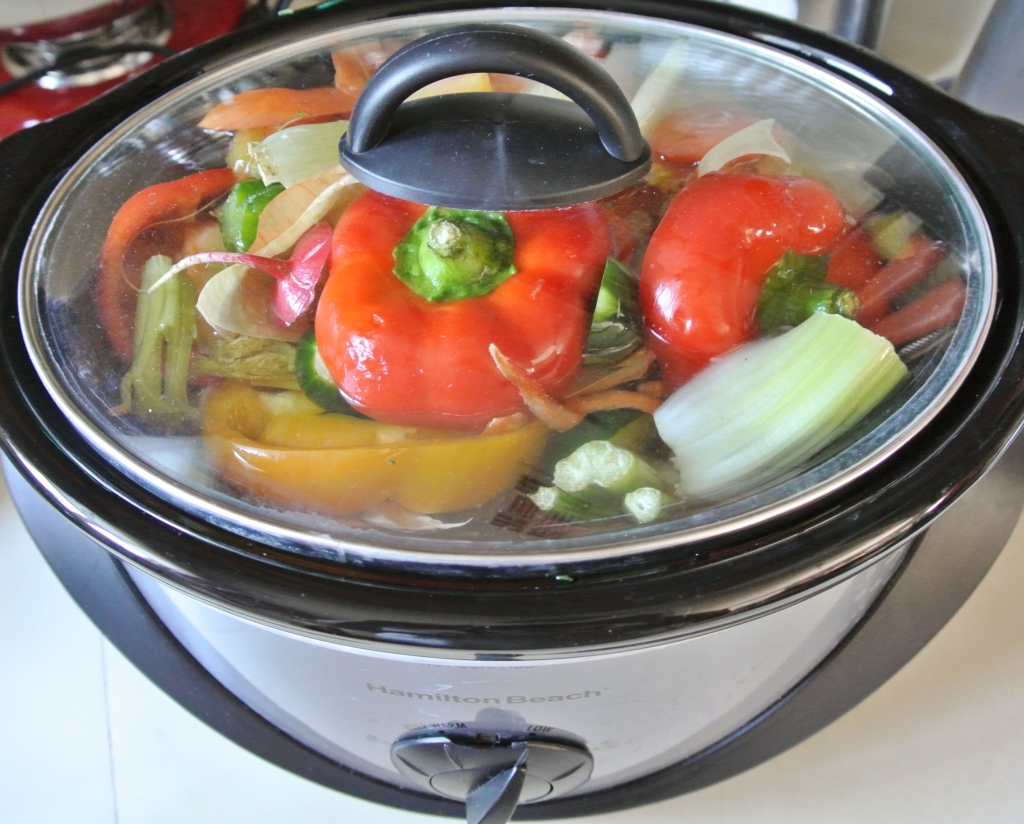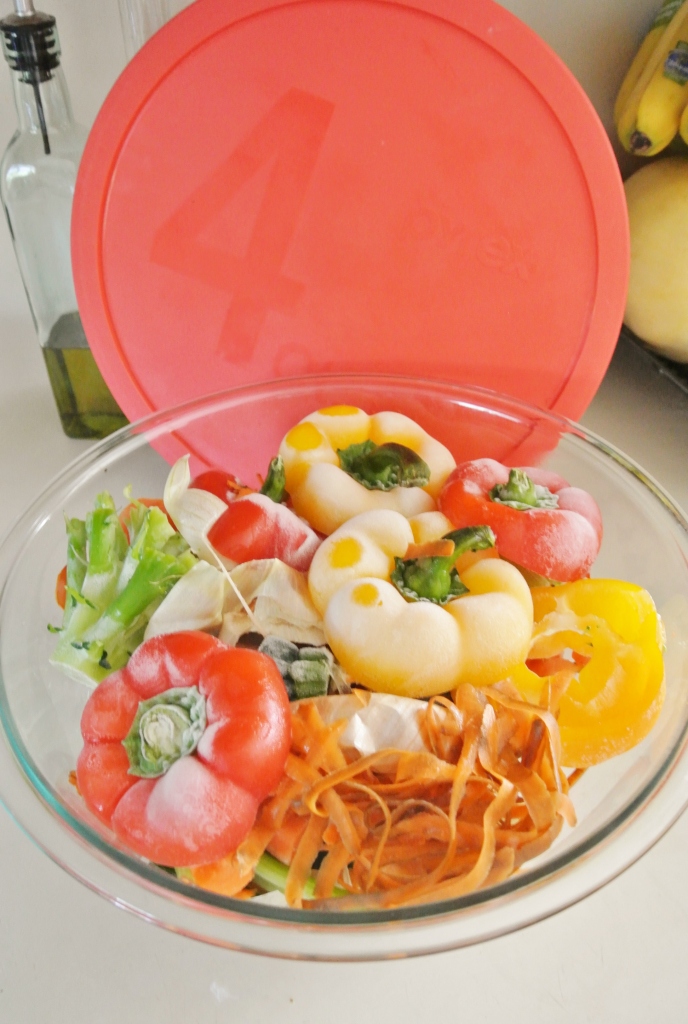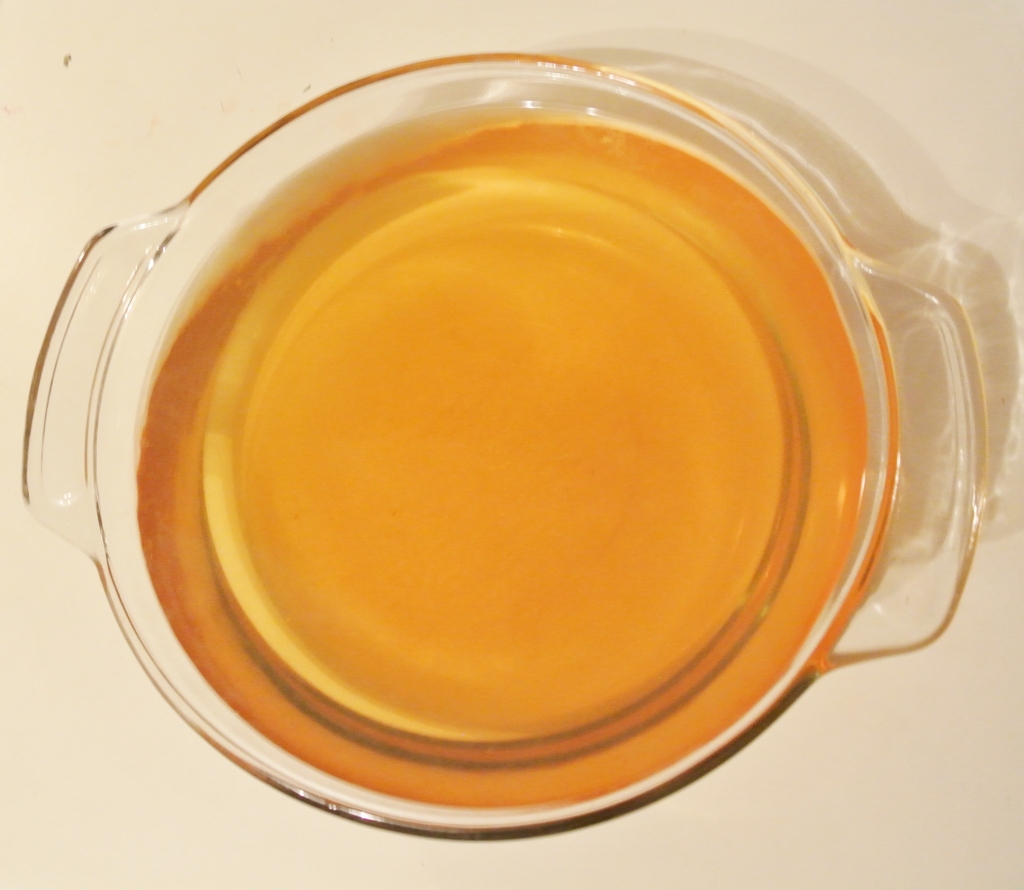 When we’re craving something warm and have a lot of veggies on hand, Travis and I go for soup. Homemade soups make for quick and filling lunches/dinners and welcome almost any random assortment of vegetables, beans, lentils, or grains. The most satisfying soups have a strong stock base. I learned a lot of what I know about cooking basics from THE Rachael Ray, who always says that using a quality stock gives soups, stews, chilis, and sauces a slow-cooked flavor in a lot less time.
When we’re craving something warm and have a lot of veggies on hand, Travis and I go for soup. Homemade soups make for quick and filling lunches/dinners and welcome almost any random assortment of vegetables, beans, lentils, or grains. The most satisfying soups have a strong stock base. I learned a lot of what I know about cooking basics from THE Rachael Ray, who always says that using a quality stock gives soups, stews, chilis, and sauces a slow-cooked flavor in a lot less time.
Today’s post isn’t focused on soup, but rather that essential stock base, located in my Basic Formuals. Purchasing stock in those cardboard cartons is expensive, and often unnecessarily ridden with added sodium. I’ve found a way to make veggie stock that is affordable, healthy, flavorful, and makes the most of vegetable waste.
If you tuned in for my post on fruit scrap candles, you know that I like to use every square inch of my fruits and veggies. My veggie stock utilizes the parts of your vegetables that you likely normally throw away. If you don’t plan on using your veggie scraps for composting, consider making them into a stock that you can later use in a variety of cooking applications.
What veggie scraps make for a yummy stock? While this list certainly isn’t exhaustive, I have used all of the following:
- Carrot tops, ends, and peels
- Potato (all varieties, especially sweet) and yam ends and peels
- Bell pepper tops
- Tomato tops
- Celery ends and leaves
- Broccoli stems*
- Kale ribs*
- Leek tops (the green part)
- Root veggie (beets, turnips, radishes, etc.) tops and tails
- Onion ends and peels
- Zucchini and cucumber ends
- Large mushroom stems
- Garlic ends and peels
*Incorporating too many green veggies may leave your stock tasting a little bitter; use sparingly!
Many of these seemingly inedible vegetable parts, like the veggies themselves, are often dirty when first purchased or harvested. It’s imperative that you get in the habit of thoroughly washing your vegetables in entirety before you peel, chop, or otherwise break them down. Then, when it comes time for your scraps to become stock, you aren’t simmering dirt in the pot. 🙂
I accumulate veggie scraps for stock in a 4-quart Pyrex bowl in the freezer, pictured below. I’ve never had an issue with freezer burn, partly, I’m sure, because I go through veggie scraps so quickly. You can see that this batch has started thawing and has only a light layer of frost on parts that are still frozen.
 It isn’t necessary that you thaw the veggies before making your stock. I usually let mine defrost on the counter top for just a little bit (maybe 20 minutes) so that they loosen up for dumping into the crock pot. If any of your veggies have frozen to their freezer receptacle, fill it with hot water and they should come right up. I place the veggies in my crock pot, fill it with water, put the lid on, and set it to low overnight or while I’m at work. I don’t add any salt, pepper, spices, or herbs so that the stock is a blank slate, ready for any number of dishes.
It isn’t necessary that you thaw the veggies before making your stock. I usually let mine defrost on the counter top for just a little bit (maybe 20 minutes) so that they loosen up for dumping into the crock pot. If any of your veggies have frozen to their freezer receptacle, fill it with hot water and they should come right up. I place the veggies in my crock pot, fill it with water, put the lid on, and set it to low overnight or while I’m at work. I don’t add any salt, pepper, spices, or herbs so that the stock is a blank slate, ready for any number of dishes.
Don’t have a crock pot? Simmer low and slow for several hours on your stove top, or on medium high heat for just an hour or two, stirring occasionally to prevent sticking to the bottom of the pot.
After the veggie scraps have cooked through and the water has taken on a rich caramel color, drain your stock through a fine colander. If necessary, you can run it through paper towel to catch any small bits that remain. Discard your veggie scraps, once and for all. Store in the fridge for up to a week before using in cooking. Enjoy!

[…] that DIY veggie stock I made a few days back? Today, I’m putting it to good use making a salad that I love. My […]
LikeLike
[…] liquid as needed, depending on whether you’re going for a dressing or thick dip (ideas: veggie stock, water, or more acid) –> I’m using 3 tbsp […]
LikeLike
[…] chopping. Remember, you can collect the clean scraps in a large bowl in the freezer to make into homemade veggie stock later on. 🙂 On to the […]
LikeLike
[…] Liquid (water, oil, vegetable stock, vinegar, or more citrus juice) as needed until desired consistency is achieved –> I’m using about ¼ cup homemade vegetable stock. […]
LikeLike
[…] wash your vegetables so that you can save the scraps for homemade veggie stock. Coarsely chop your tomatoes and onion. Throw them into a blender with your garlic, herbs (not the […]
LikeLike
[…] cups homemade vegetable stock (or […]
LikeLike
[…] The “meat” of today’s lettuce wraps takes the form of mini-portobello mushrooms. Like meat, these fungi are a source of protein, as well as an even richer source of copper, selenium, and vitamin B6. They are also among one of the only natural sources of vitamin D, although in small amounts. Portobello mushrooms are an ideal meat substitute for those still trying to kick the stuff. (PS: The large caps make for excellent burgers! PPS: That’s a crockpot of my three-bean chili in the background, which would also be delicious with mushrooms!) You can certainly eat the stems, but I remove them and save them for homemade veggie stock. […]
LikeLike
[…] cup+ liquid for pureeing beans/lentils (i.e. homemade veggie stock, citrus juice, water, unsweetened and unflavored plant milk, oil, etc.) –> I’m […]
LikeLike
[…] liquid as needed (ideas: homemade veggie stock, water, or more acid) –> I’m not using […]
LikeLike
[…] (water, oil, vegetable stock, vinegar, or more citrus juice) as needed until desired consistency is achieved –> […]
LikeLike
[…] cup+ cooking liquid (homemade veggie stock, red wine, water, unsweetened plant milk, etc.) –> Trav’s using […]
LikeLike
[…] cups homemade vegetable stock (or water)* –> I’m using veggie stock. This batch contained beet scraps, so it’s a […]
LikeLike
[…] cup+ liquid for pureeing beans/lentils (i.e. homemade veggie stock, citrus juice, water, unsweetened and unflavored plant milk, oil, etc.) –> I’m using […]
LikeLike
[…] liquid as needed (ideas:homemade veggie stock, water, or more acid) –> I’m not using […]
LikeLike